The music of FINAL FANTASY VII is beloved by many and has been revisited over the years for new generations of fans to experience. We recently had the opportunity to talk with the Sound Team at Square Enix to discuss the modern adaptation and extension of the original score for FINAL FANTASY VII REMAKE.
Introducing the team:
I believe the FINAL FANTASY series and the Square Enix Sound Team have maintained the quality of cutting-edge technology among all team member roles for many years. Can you introduce the sound team members of this FINAL FANTASY VII REMAKE about their positions and roles (if you have a history of past FINAL FANTASY titles)?
Makoto Ise, the Sound Director for the FINAL FANTASY VII REMAKE: "Our team was in charge of overall production and management, which includes quality control of the entire sound, specification design planning, production, and implementation. In the FINAL FANTASY series, I have participated in FINAL FANTASY IX, FINAL FANTASY XII, FINAL FANTASY XIV, FINAL FANTASY Type-0, FINAL FANTASY CRYSTAL CHRONICLE series, etc."
Mitsuto Suzuki; "In the FINAL FANTASY VII REMAKE, I composed and arranged new songs, and directed the songs in charge. The FINAL FANTASY titles I participated in throughout the past were in charge of FINAL FANTASY XIII series (FINAL FANTASY XIII, FINAL FANTASY XIII-2, LIGHTNING RETURNS FINAL FANTASY XIII), MOBIUS FINAL FANTASY (iOS / Android), etc." (Suzuki)
Keiji Kawamori, Music Supervisor in the FINAL FANTASY VII REMAKE, involved in music production. "I was in charge of interactive music specification and implementation, managing composer/arranger. In the past, I had been in charge of several FINAL FANTASY series such as FINAL FANTASY VIII, FINAL FANTASY IX, FINAL FANTASY X, FINAL FANTASY XII, FINAL FANTASY XIII, FINAL FANTASY XV, etc." (Kawamori)
Hikaru Taniyama was involved in the production as a Lead Audio Programmer for the FINAL FANTASY VII REMAKE . "I was in charge of developing in-house sound drivers and authoring tools, and implementing UNREAL ENGINE 4 plug-ins. FINAL FANTASY titles that I have been involved in in the past have participated in the development of FINAL FANTASY XIII series, FINAL FANTASY Type-0, FINAL FANTASY XIV, FINAL FANTASY XV, MOBIUS FINAL FANTASY, etc."
Last but not least, Atsushi Suganuma. "In FINAL FANTASY VII REMAKE, as a Supervising Sound Editor, I was in charge of managing and directing Foley in general for this work, and mixing cutscenes in general. As for the achievements of the FINAL FANTASY series in the past, I was in charge of FINAL FANTASY XII series trilogy, FINAL FANTASY XV, and the movie FINAL FANTASY XV KINGSGLAIVE." (Suganuma)
Music Introduction:
The Music of FINAL FANTASY VII is beloved by many and has been revisited over the years for new generations of fans to experience. With the opportunity of the FINAL FANTASY VII REMAKE, what were the main aesthetic considerations the composers wanted to address and keep in-mind as they were transitioning the music to this modern adaptation? What elements of the original score were important to keep and where was it adapted or extended in the REMAKE?
In terms of music, I tried to make it feel nostalgic for fans who used to play the original while still being new, and those who start to play the FINAL FANTASY VII first will feel new. For example, just as there are changes in the way music is played, music has tones and rhythms that match the times. I thought that it would be a new experience to establish them on the world view of FINAL FANTASY VII REMAKE, and it is one of the elements that should be incorporated. (Suzuki)
I think that the important and wonderful points of the original music are the melody and world view created by Mr. Uematsu, and willingness to always try new things, as you can see from the songs such as the "One Winged Angel". Even in the FINAL FANTASY VII REMAKE, that point was important in the production of music. Also, in a little maniac place, the original version is created with the built-in sound source, so naturally it is not a rich sound, but since it is a rough and strong tone, its nuance is deliberately reflected on some of the songs in FINAL FANTASY VII REMAKE. (Kawamori)
Music Leitmotif & Repeated Themes:
In what way was the music vocabulary expanded to help reinforce thematic material from the original FINAL FANTASY VII compositions? In what ways were these new pieces of music used throughout different areas of the game to reinforce music themes and emotionally guide the player?
Below is a comment from composer Wilbert Roget II:
"Music - I'd been meditating on the score as of late and another angle that might be worth talking about is the use of leitmotif and recurring themes. For example, in the original game there was really just one battle theme and one general-boss theme - in FINAL FANTASY VII REMAKE, there's actually many different arrangements of the battle theme throughout the game, sometimes serving as a two-layer action/suspense suite, and sometimes serving as a boss theme and even being subtly hinted at in cutscenes underneath dialogue to suggest 'we will fight if we need to"'.
In the FINAL FANTASY REMAKE version, characters that did not appear in the original version have been added, and the story etc. are drawn very carefully, so we are adding new songs focusing on those added elements and scenes.
In the completely new song, while launching a new element of FINAL FANTASY VII REMAKE version of music, there is also a new song that incorporates the melody of the original song that suits the situation as a motif, so that users who played the original version can feel nostalgia. In the end, there were moments where motifs ended up appearing repeatedly in the game.
Furthermore, this time, we made it on the premise that the songs are seamlessly switched in relation to the character's feelings without interrupting the songs, and from the time of user operation before entering the cutscene, the intro part of the cutscene song is I made it in a loop, and when I entered the cutscene, I made it so that the song would develop without interruption. I made an extra effort for music to play seamlessly that matched perfectly with the seamless game design concept. (Kawamori)
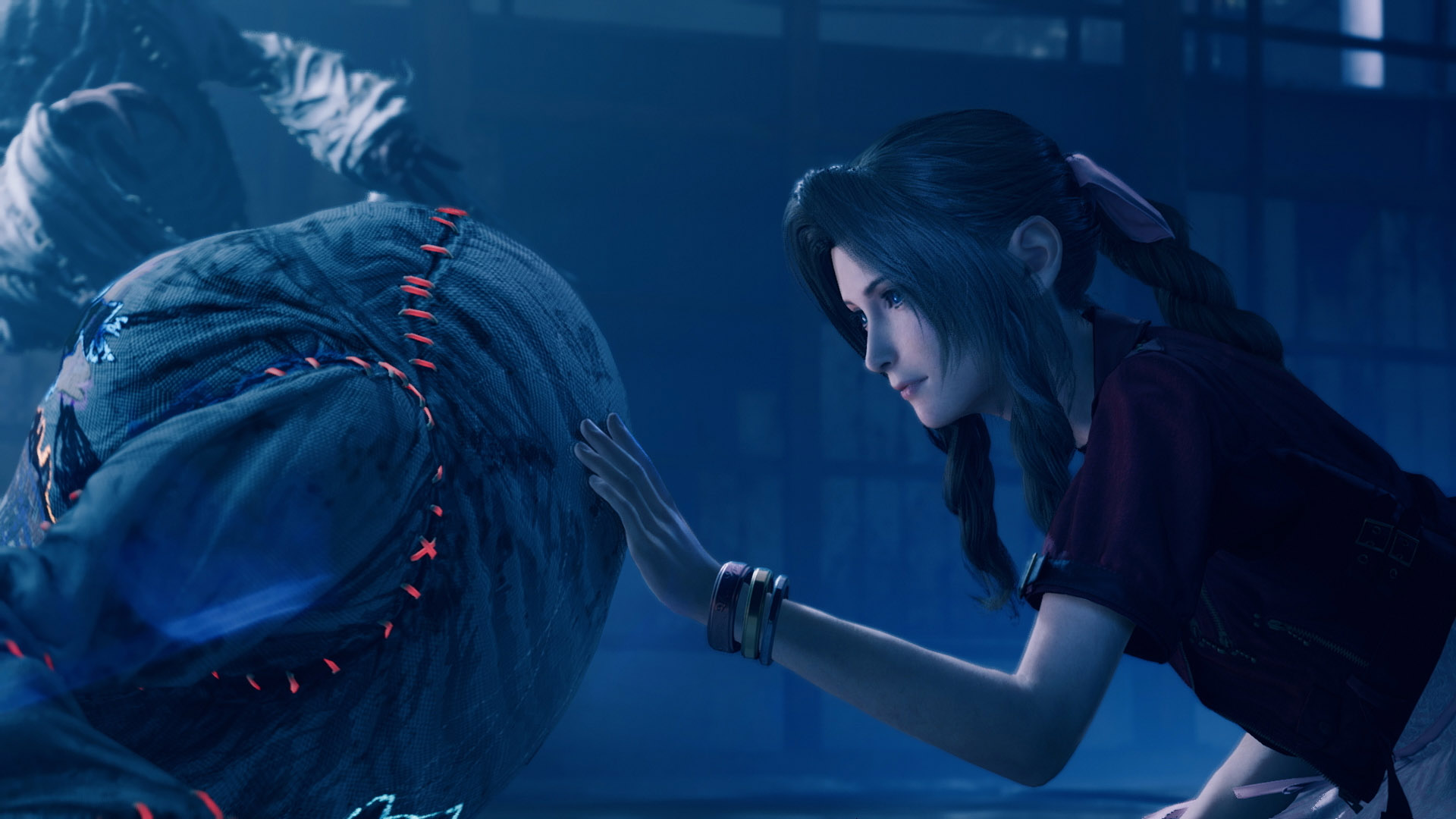
Things to consider about music technology:
How did changes in technology, with regards to: live instrumentation, sample-based playback, layering, and music system recreation, affect the way that compositions were approached for the REMAKE?
Regarding music song changes:
The seamless transitioning from exploration/ cutscene to battle maintains the musical scoring on a moment-to-moment basis. How are musical transitions managed across the different gameplay types to preserve this illusion of seamless musical accompaniment?
Comments from composer Wilbert Roget II:
"Music - Quite a lot to talk about here, it was a huge effort from many of the biggest game composers in Japan (the OST is 8 CDs long!!). From a tech standpoint, I'd say my favorite aspects are the variety of seamless exploration-to-battle and cutscene-to-battle transition types. Some areas have synchronized two-layer cues that switch to an aggressive arrangement during combat (eg. Sector 5 scrapyard, or upper plate residential area), while others start a separate battle cue each time (eg. Collapsed Expressway). Boss battle music flows seamlessly from intro cutscenes, and several bosses even have mid-fight cutscenes with transitions that appear to wait for the appropriate downbeat before cueing the visuals.”
The reason for having a concept of establishing natural music transition without interruption in the FINAL FANTASY VII REMAKE is to match the seamless gameplay design, and to reprise the same music system from the original game that plays continuously throughout the experience.
To be able to map out the whole development with this concept in mind, we paid extra attention to step back and to see a bigger picture for us to determine the whole chapter as opposed to every scene. And it was important for us to build a solid workflow of a music transition system where avoiding too many pointless music transitions in the game.
Thanks to having designed a solid music transition system, our efforts were paid off by hearing good feedback from the dev team that music transitions worked well to give excitement and consistency in both boss battle scenes and Motorbike battle scenes in the game. (Kawamori)
Voice
Things to consider regarding voice playback technology:
What aspects of spoken dialog needed to be taken into consideration in the context of the way game mechanics and storytelling were evolved for the FINAL FANTASY VII REMAKE? Did you have to record more variations to support different systems or because of the way gameplay was implemented?
The main story is included to implement as it goes. Battle voices and various voices in the city are directors, and Toriyama, who is in charge of the scenario, takes in the contents of the play from each battle charge and level charge, and the contents of the variation are decided and recorded. From there, the sound side is incorporated into the system, and adjustments and incorporation are made in consideration of the tempo of the game. (Ise)
Voice system:
The FINAL FANTASY VII REMAKE dialog achieves a level of detail that preserves the unique traits of each character when performing similar moves during battle. In addition to the increased voice performance required to support this, what is being leveraged on the game-side to ensure that the right dialog is delivered at the right time?
Comments from composer Wilbert Roget II:
"VO: The systemic dialogue during battles was a great new element I haven't seen accomplished to this degree in a video game before. FINAL FANTASY VII's Materia system allows multiple characters to share similar moves (eg. everyone can cast the same Fire spell), but each one has a different set of lines they say when using it that reinforce their character traits - for instance, Cloud might be succinct and cocky, whereas Barrett might give a more over-the-top taunt. Similarly, switching active characters sometimes has a voice trigger, as does characters reaching low health or going unconscious. It always reinforces their personas as well as relationships towards each other"
For the combat voice system, since each character has its own unique characteristics, to be able to bring out the individuality of each character, we decided to have an individual VO even when the same Materia is used in the combat. In addition, we create an immersive feeling by changing the situation and the combination of interactions. At the beginning of development, we initially planned to implement numbers of more complex interaction and situation dependent VO systems, but from the viewpoint of schedule and cost. We decided not to go ahead with the plan after all.
In addition, the combat voice system controls a more complex systemic approach as the game design requires more action elements and a multi simultaneous progression for the game.
Depending on the characters, but combat VO consists of an average of 500 words per character. The general mechanism of the combat voice system is to divide all those combat VO into roughly 100 categories to control and prioritize the VO in relation with every game priority and every combat situation. This voice system really makes an immersive combat gameplay experience possible without compromising the tempo of the gameplay by carefully controlling vast amounts of combat VO assets and handpicking the right VO. (Ise)
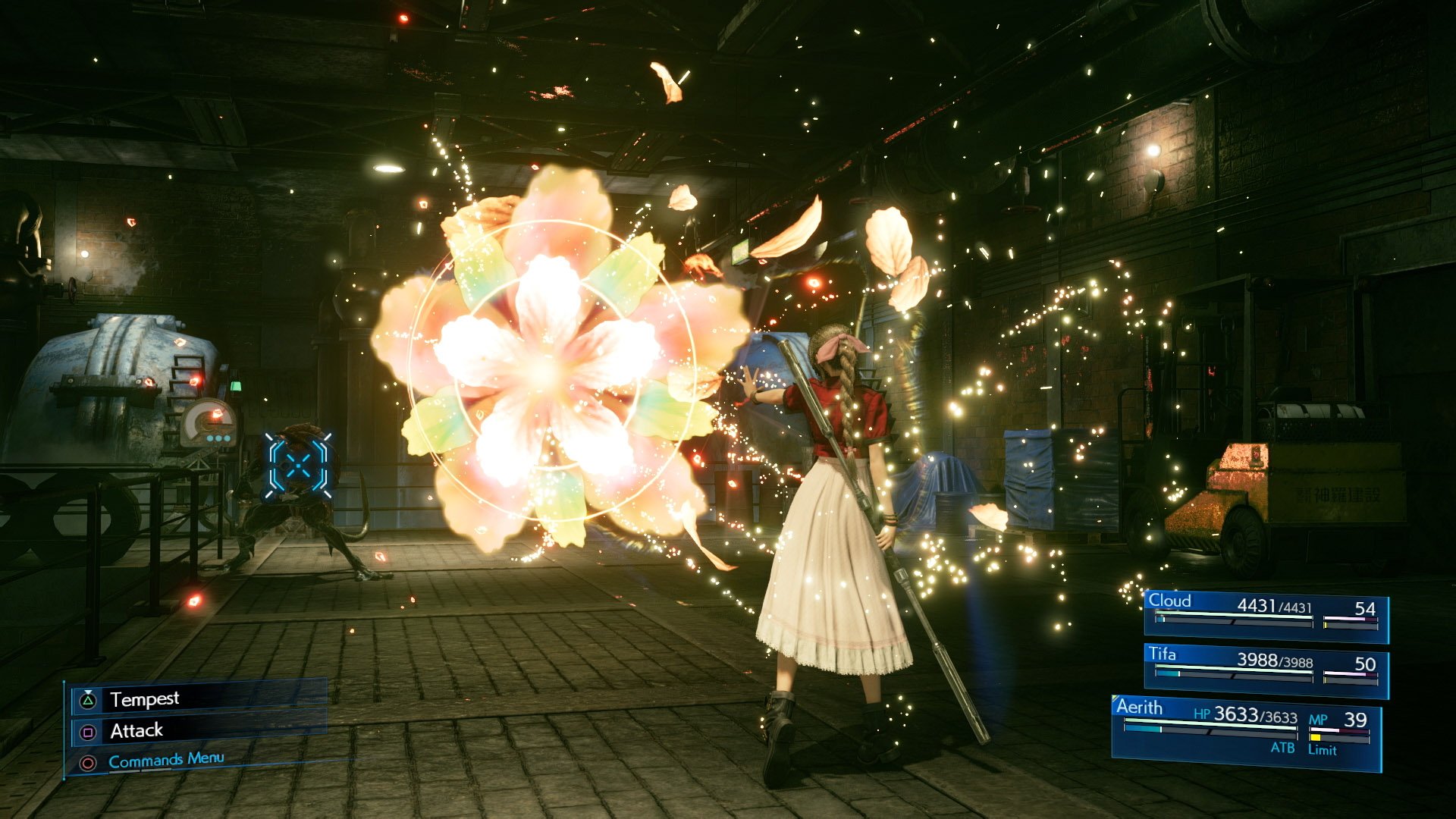
Sound
How to express the sound:
FINAL FANTASY is known for its iconic Sound Design; unique sounds that embody the intention of a given effect, character, interaction, or game play moment. In the evolution of sound for the FINAL FANTASY VII REMAKE, how did you balance these iconic sounds with the increased sense of reality achieved by the visuals? Were there certain sounds that needed to be "more real" sounding in-order to fit with the visual aesthetic, in comparison with their use in the original FINAL FANTASY VII?
Additionally, is there a point where sounds are deemed to be "too real" and aesthetic choices are made to make them more iconic?
From the very start of the project, our objective of the overall concept for sound of FINAL FANTASY VII REMAKE was "Pursuit of hybrid between nostalgia and new where the game players who did not even play the original game can enjoy. At the same time, try our best not to disrespect the original game by doing it." As for BGM, to be able to follow the similar footsteps of the original game, from the inception of the development, we took the systemic approach to design an immersive experience through playing music throughout the gameplay, but trying not to make the players getting tired of hearing the music all the time. And as for the Sound design, due to the fact that there are many apparent differences in the technology advancement in graphic and sound assets between the original game and this project, we did not get caught up with it so much and decided to pursue our own way of creating the world of Midgar. I personally referred more from the CG animation project "FINAL FANTASY VII ADVENT CHILDREN" than the original game as I have vivid memories of the time when I used to work on that project as a Foley Artist in the past. (Ise)
Sound of each character:
The characterization of sounds for movement and physical interaction communicate a great amount of detail about the different characters. How much of the sound was created based on each character compared to systemic choices for different surfaces, materials, shoe types, etc?
Comment from composer Wilbert Roget II:
"SFX: The character footsteps and Foley was my favorite aspect of the sound design, especially in smaller spaces where every detail of weapons jiggling against their materia implants could be heard. I even got a strong sense of different characters' personalities through their footstep cadence and timbre."
Speaking of the overall sound system, our proprietary sound driver has been fully enhanced, to be able to handle real-time control over multiple gameplay situations. It was a true gain for us to be able to create a system that automatically triggers almost all of the character movement sound and to realize the real-time variable parameters even for subtle movement of characters. In fact, the character movement sound is designed by innovative, yet carefully detailed sound design for this project. For Foley recording sessions of character sound, we break down all the sound elements by examining from character art, then record each material. We then select material to divide into neck, shoulder, arm, chest, waist, thigh, ankle, and footstep parts for implementing each asset into the game. This process includes envelope info that is to set variable sound parameters for character sound. After that, by assigning each part to the character's bone asset, character sound will be calculated according to how accelerated the movement of the assigned asset and how fast the speed of the movement of the character in the game. With all that process accomplished, all the main character sound of FINAL FANTASY VII REMAKE is designed to play almost automatically from in-game combat, exploration to cutscenes. (Ise)
Regarding the material of each character's motion sound, as explained by Mr. Ise, the goal is to Integrate to the system (MASTS) that automatically triggers the character motion sound, and each character's unique sound is recorded in the Foley session. I cannot emphasize enough how important preparation was for Foley sessions. We repeated our meetings to prepare ourselves for a better understanding of what kind of equipment, prop we need for each character and every location information available. On the day of Foley sessions, as much to identify as we can, I subdivided each character`s animation patterns into neck, shoulders, arms, chest, hips, thighs, ankles, shoes with terrain info of all locations to be able to record very detailed material one by one. After the session, we organized the process of editing and processing to make the best use of the originality of each character, and finally implemented it. (Suganuma)
MASTS: Square-Enix has always been on the cutting-edge of technology both visibly and audibly. Can you explain what the motivations and solutions that MASTS (Motion-Controlled Real-Time Automatic Sound Triggering System) helped to solve for the FINAL FANTASY REMAKE?
MASTS has greatly evolved its technology through this project. With this advancement of the technology for MASTS, we were able to increase the number of parts for MASTS to handle even delicate movements in cutscenes. The advantage of this system is that it can easily handle animations with frequent transitions in motion blending and procedurally configured motions. Since it does not depend on motion, it is one of the big advantages that the sound will not be affected even if the animation is revised by changing or adjusting. Even in cutscenes, the character sound is completed when the model is placed, it does not straddle the sound fix of the scene, and it is also unaffected by cut changes and motion changes. It also contributed to the cost reduction of sound production because some cutscenes, such as conversational cutscenes, did not require extra work cost since MASTS can substitute for that work. (Ise)
Environmental sound:
With the many diverse environments throughout the FINAL FANTASY VII REMAKE, how did you ensure the appropriate late reflections (Reverb) for each location and has there been any technology applied to real-time early reflections?
FINAL FANTASY VII REMAKE applies 3 processes for spatial sound: Early reflection, Late reflection and Delay effect. The sound designers can implement volume parameters directly into the game to partition the certain area of the game. With the volume parameters, those 3 types of effects are applicable including the listener position info and additional settings to match with each game environment. It has been devised so that the output can be changed more smoothly in real time so that the output would not go over the limit even if an extreme effect parameter change occurs instantaneously. Currently, volume parameters and parameter settings have to be handcrafted by manual labor unfortunately. But we have a plan to solve this issue by automation to reduce manual labor. (Taniyama)
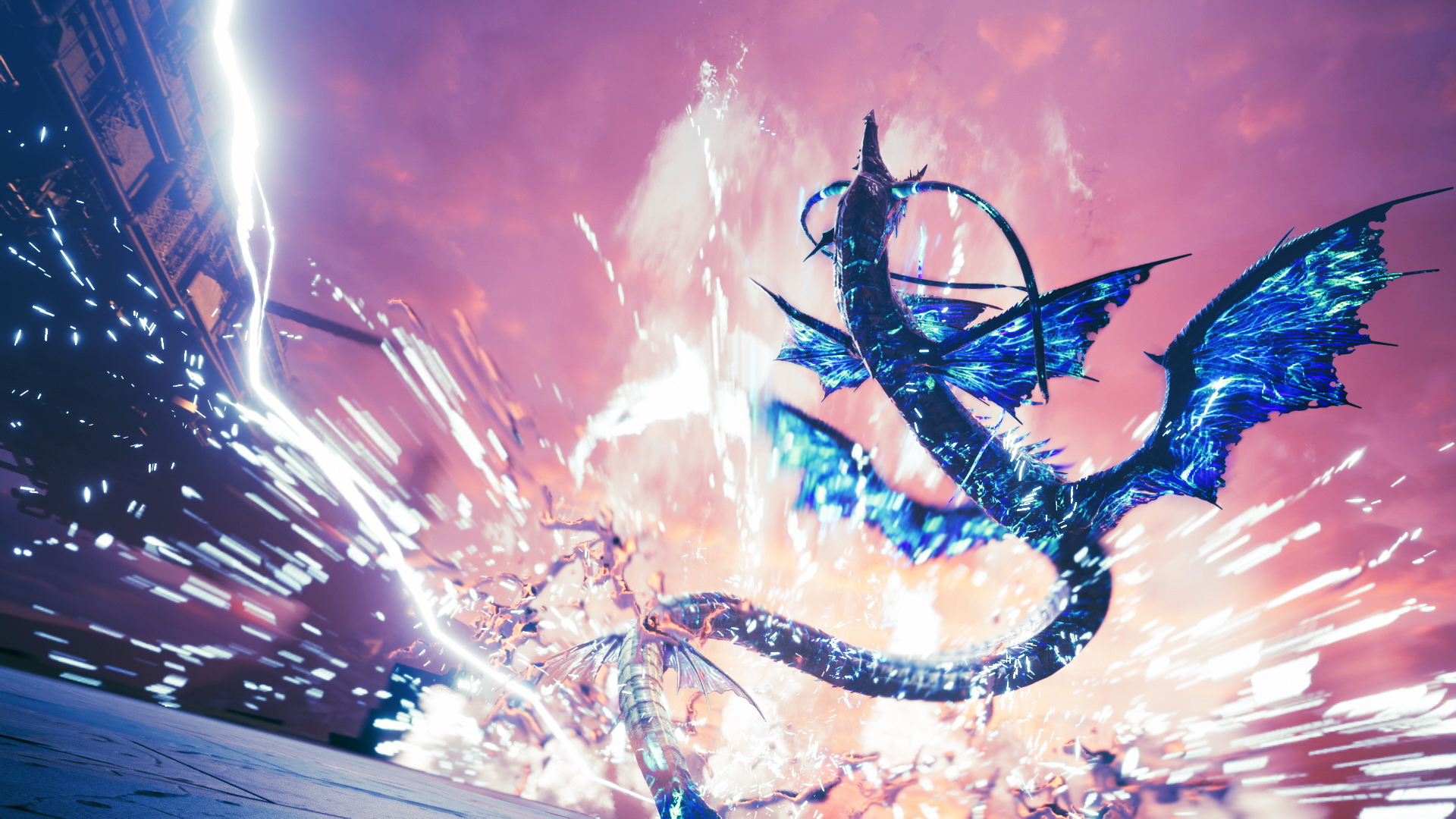
Dynamic mixing:
What was your approach for mixing across the different areas of sound throughout the game? What tools or techniques were available to you for dynamic mix decisions and what were these decisions based on? Regarding the transition between different modes (gameplay, in-game cutscene, pre-rendered cutscene, etc), do you feel you were able to achieve a seamless audio mix experience for the player?
Comments from composer Wilbert Roget II:
"Mix: This was a reimagining of a game that has one of the most iconic scores in game history, so the music definitely is more present in the mix than is typical for a Western game. But as a player I never felt any difficulty hearing the VO, and the SFX during battles always sounded just as impactful as it needed to be. It'd be great to hear more about mix philosophy and how they structured the content so that everything could fit together without conflict. Eg. were ambiences and emitters turned lower in the mix than usual so that music would have more room? Anything unusual/innovative about the systemic ducking rules? Were there music mastering guidelines that helped make sure all the different composers sounded consistent?"
Well, as you mentioned, overall we decided to place music more front in the mix for this project. I intentionally planned music to be slightly higher in the mix than usual. The reason for that is the music of the original FINAL FANTASY VII REMAKE is a very important factor in the game and we would want to answer many fans` expectations of the music. Also with this concept of music in mind, I decided to go ahead with a challenge that music can create more dynamics in the game for the players not to get tired and feeling any discomfort. On top of that, the overall mix is set to make the best use of the dynamics of each sound element by integrating our system to control the in-game mix in real time. For Sound Design, the effects and filters are changed according to the distance and game environment to give a sense of realism. And there is a ducking system for Dialog to be higher in the mix and duck down the rest of the sound element during the exploration and combat. Even during cutscenes, the volume of the music and the sound effect are controlled accordingly for it to tell the story and not to interfere with the scene.
Personally, my approach of mixing is to have Dialog to be an anchor of the overall mix. For this project, we first decided to set an overall mix with the target loudness value for 1 particular location in the game where you mix throughout exploration, combat, and cutscenes. We then move on to establish a reference for the whole game and to mix towards an ideal target loudness value by adjusting all the sound elements for a number of times. This is a standard practice to mix the game as we repeat the same procedure to the rest of all the other locations in the game. Not to mention that even though this process is systematized, it really does take a long period of time to complete.
It goes without saying that our in-house debugging tool really is an indispensable tool for mixing processes. This dedicated sound debugging tool can visualize and monitor game situations, such as playsound info, play sound prioritization & limitation, and distance attenuation. I think it is a very innovative and essential tool for in-game mixing for it to be able to monitor any unwanted playsound info and limit any sound that should be limited.
It was extremely difficult to adjust a seamless mix like this one, but I think we have achieved some results. I think we were able to take on meaningful challenges that will lead to future sound development, such as great expressive use of music and sound design that are refined by an accurate dynamic range in the mix. (Ise)
As an additional note to Mr. Ise's comment, in order to build a reference for the entire game, we first mix cutscenes and movie scenes based on the loudness standard values, built a basic structure of overall mix, then took the process of adjusting the mix balance with exploring scene and combat scene in order to match with overall mix. From the viewpoint of production progress, this process was the most efficient method, and I had to check it many times in various listening environments and repeat the mix over a long period of time, but on the contrary. I think it was the best process to derive the mix level that best suits the gameplay of this work. (Suganuma)
Summarizing the Sound of the game:
Coming back to the contributors from the audio team, if we could get them to summarize the sound of FINAL FANTASY VII REMAKE in a sentence - whether it be about their experience working on this iconic game, or about how they'd describe the sound - what would that one sentence be?
“The sound of FINAL FANTASY VII REMAKE was all created by all the effort of every member of the sound division!”
This project makes full use of the technology that the sound department has cultivated so far, and further refines it. I think that all the know-how from our department has not only been shared among all the sound team to grow, but to help build the foundation of the definitive sound of FINAL FANTASY VII REMAKE.
With continuing to cultivate this great work ethic in mind, I will keep pursuing great new game sound for the future projects to come. (Ise)
Special thanks to Composer Wilbert Roget II for providing context to the questions delivered to Square Enix and helping to shape the discussion with his expert insight.

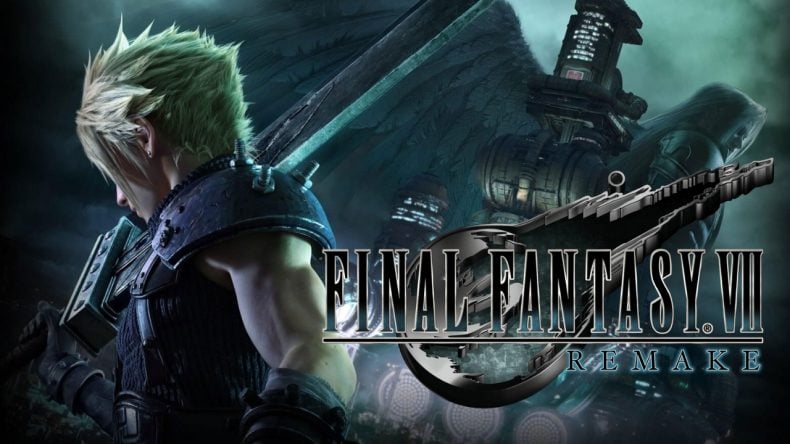
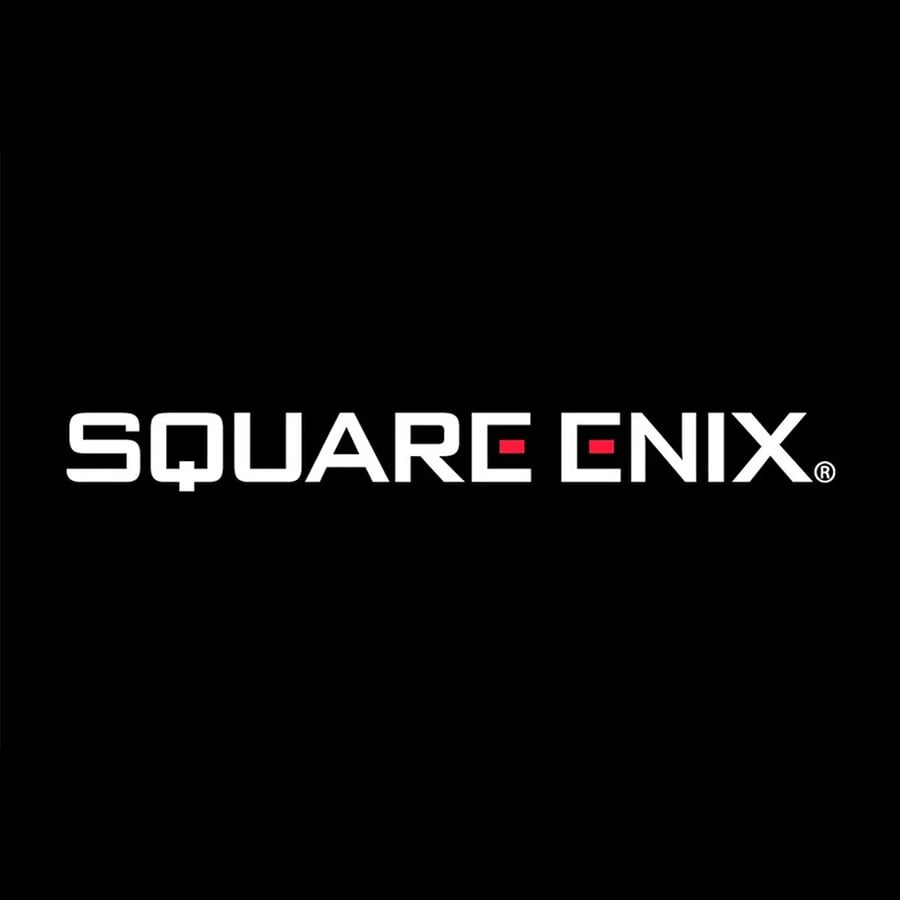
Comments